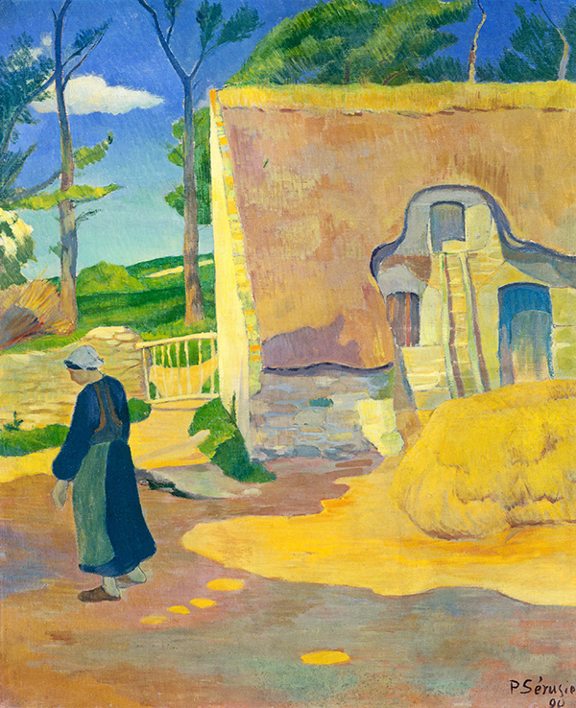Gem of the Month: Paul Sérusier
The “schools” of Pont-Aven and Le Pouldu in Brittany, France, were artist colonies even before the “star,” Paul Gauguin (1848–1903), showed up in 1886 and 1889, respectively. The area began to attract artists as early as the 1850s. I have always preferred the paintings of Paul Sérusier over Gauguin because I appreciate the way he used color more for the pure joy of it than as a statement of rebellion.
 |
| Paul Sérusier (1864–1927, France), Farmhouse at Le Pouldu, 1890. Oil on canvas, 28 5/16" x 23 5/8" (72 x 60 cm). © 2024 National Gallery of Art, Washington. (NGA-P0772) |
Farmhouse at Le Pouldu—painted the year before Gauguin departed France for the South Pacific—shows a heavy debt to Gauguin's Pont-Aven style. The subject is painted in broad, flat areas of vibrant color, where surface decoration is as important as the explosive color. Traditional Breton life was explored as a subject not with nostalgia or sentimentality, but with an eye for color as the means of expression. Although his subject matter did not alter over the next few years, this use of pure color did as Sérusier searched for a more representative, rather than intuitive, type of expression.
Like most major art movements grounded in strict theories, Impressionism ran its course as a ground-breaking art movement between the 1870s and 1880s. By that time, some artists rejected the limited theory of Impressionism that neglected psychological depth and emotional involvement in the work of art. Light and color were still major concerns of the Post-Impressionists. However, they rejected the momentary, detached mood of Impressionism that emphasized the technical aspect of the work of art rather than the subject.
Post-Impressionism was period of transition leading to highly subjective strains of art in the 1900s. Artists associated with Post-Impressionism reinvested subject matter with importance, creating studies in what the very nature of subject and composition should be. Gauguin’s painting freed color from imitating observed nature and distorted form for purely visually, expressive purposes.
Born in Paris, Sérusier earned degrees in letters and science from Lycée Condorcet. After working in business, he decided he wanted to become a painter, In 1885, he began studying at the Académy Julian, where many of the Impressionists had gone. In 1888, Sérusier traveled to the town of Pont-Aven in Brittany. By the turn of the 1890s, the Pont-Aven artist colony had attracted artists from many countries in Europe and the United States. They were a group of artists trying to escape both the domination of academic painting and Impressionism’s domination on the avant-garde painting scene.
Sérusier immediately fell under the spell of this group of artists who emphasized subject matter over technique. Befriending Gauguin, a “leader” of this group, Sérusier adapted Gauguin's philosophy of painting: avoiding imitative painting, using pure colors, exaggerating visual impressions, and developing a personal iconography and symbol system. Sérusier painted Le Talisman, Paysage au Bois d'Amour during his time with Gauguin in 1888, which inspired a new group of artists called the Nabis. Comprised of students from the Académy Julian, including Sérusier, the Nabis strove to reinvigorate painting in exhibitions held between 1889 and 1900. Unfortunately, Sérusier’s later work, especially after World War I (1914–1918), reverted to more lyrical subjects, many influenced by Medieval tapestries, in which color was downplayed in favor of symbolic themes.
Correlations to Davis programs: Explorations in Art 2E Grade 3: 4.9; Explorations in Art 2E Grade 4: 4.4; Experience Art: 1.2, pp. 38–44; The Visual Experience 4E: 5.2; Discovering Art History 4E: 13.2


Comments